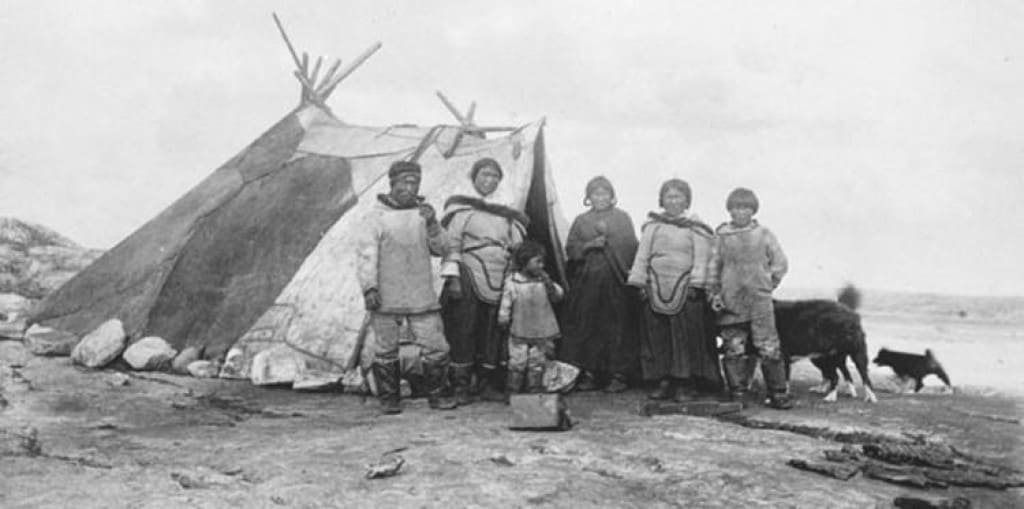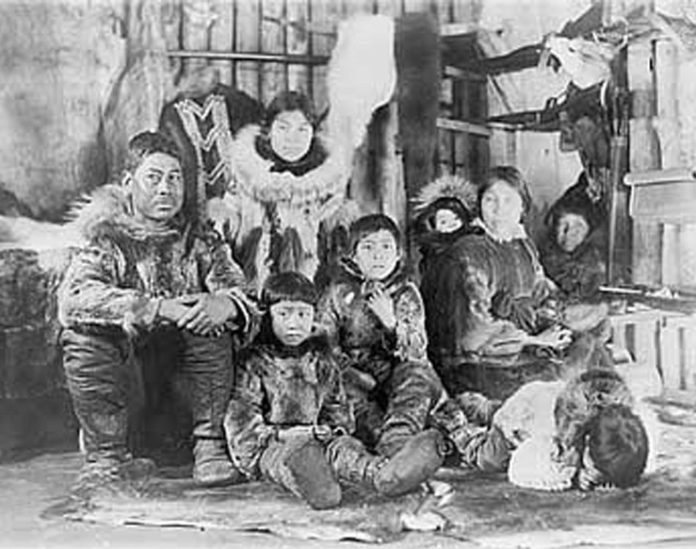A small Inuit village in Canada was known by fur trappers who would pass through it occasionally. But in 1930, something weird happened; a fur trapper named Joe Labelle entered the island’s premises and didn’t find a single person there. In fact, 7 sled dogs were found dead from starvation in a grave that looked like it was man-made. A search was conducted to find the missing people, but not a single body was found.
The year was 1930; the place, the frozen wastes of northern Canada. It was November, late fall, and the flat landscape was blasted over with ice crystals and wind. A lone trapper, Joe Labelle, made his way to an Inuit village he knew. All looked well as he approached; but when he arrived, nobody answered his greeting calls. Labelle looked around and found everything in place, everything except the people — the entire population of the village had vanished. Food, clothing, rifles, half-cooked meals, and everything else needed for life on the tundra were all at the ready, but no Inuit to use them. Labelle stood on the shore of Angikuni Lake and pondered the mystery, then went straight away and reported the disappearance to the Royal Canadian Mounted Police. Since then, the story of Angikuni Lake has been a mainstay of Canadian mystery lore.
Where is Anjikuni Lake?
Anjikuni Lake can be found deep in the Kivallig Region of rural Nunavut in Canada. Nestled along the Kazan River, it is a fine spot for trout and pike fishing, both of which are plentiful in the waters of the area. Anjikuni quickly became the established home to an Inuit tribe that grew into a colony and became famous almost overnight on a cold November day in 1930.
 Did an entire village disappear from Anjikuni Lake?
Did an entire village disappear from Anjikuni Lake?
It Seemed That Something Was Amiss
Joe Labelle was a Canadian fur trapper and an experienced one at that. He was a more than capable outdoorsman and was well acquainted with the area. He knew that the Inuit had formed a community, and he had visited them on occasions in the past. Labelle was familiar with the Inuit tales of wood spirits that were allegedly malicious and that this remote part of Canada was also steeped in the legends of the Wendigo. Despite this, the Inuit tribe were a friendly people and would always welcome passing travelers and offer them a bed for the night.
Labelle normally had very little cause to feel gripped by fear or anxiety, but this particular night at Anjikuni Lake proved to be different. The full moon that was overhead cast an eerie illumination across the village. Nothing was moving. The army of huskies that were normally boisterous with the arrival of visitors was strangely quiet as well. The only sounds that Labelle could hear were his own snow-shoes and the hollow echo of his greeting. A frontier man such as Labelle would immediately understand that something was terribly amiss. He began to investigate upon entering the village.
The normal signs of life were completely absent. No laughter or the hubbub of conversation was detected. Even worse was the total lack of smoke emanating from chimneys that indicated the presence of life. Labelle did notice that a fire had been started off in the distance and made his way toward it. The fire itself looked as though it had been burning for a considerable time. On closer inspection, Labelle discovered that someone had begun the preparations for a meal, but never finished. The stew was ruined.
A Village Now Void of People
Labelle continued onwards further into the village, still hopeful of bumping into someone that may explain precisely what had happened. Now rampant, Joe began to physically examine the homes of the tribe to determine if there was a hint or clue as to what might have caused them to up and leave. Unfortunately, no answers were forthcoming. Some of the discoveries he made were telling. Many homes were well-stocked with food and weapons. In one location, Labelle found another badly burned meal. In another, he found a discarded repair of a junior sealskin that had yet to be completed. While there was no definitive answer regarding what had taken place, it must surely have been a sudden event that was widespread and affected all 30 men, women and children in the village.
 Angikuni-Lake
Angikuni-Lake
Labelle found no signs of a struggle but did find many items that a departing group would have required to bring with them. Food, arms, and clothing had all been abandoned.
The Dogs Starved To Death
Further investigations led to a pair of discoveries that chilled the blood of even this hardened veteran. As far as he was able to tell, whatever took place was quite a recent occurrence. He had exhausted all fruitless efforts to find someone within the village. The bewildered trapper instead considered where they might have ended up going. Scanning the terrain in and around the village, he found no fresh tracks in the snow aside from his own. The most gruesome discovery he made was the reason for the absence of the dogs. Every single one of them had starved to death. This was more than enough to convince him to continue onwards to the closest telegraph office located several miles further on. That did mean Labelle would have to ignore basic necessities such food and shelter, but he was eager to leave the eerie village and retrieve help.
RCMP Launches An Investigation
Once Labelle reached the telegraph office, he reported his encounter and he insisted the Mounted Police (RCMP) launch an official investigation. En route to the village, the RCMP noticed an isolated shack that belonged to another trapper called Armand Laurent and his two sons. When questioned, they said they saw a large cylindrical object that transformed into a bullet shape before heading toward Anjikuni Lake. Unconfirmed reports also claimed that when the RCMP actually reached the village, they found that every grave in the burial ground had been opened and emptied. The headstones had been neatly stacked in piles on either side of the graves, ruling out animals as the culprits.
The Investigation Leads Nowhere
The RCMP conducted an intense and thorough investigation but could not produce one credible reason as to what had happened. What little leeway they made just led to even more questions that only served to deepen the mystery. It was their conclusion that the Inuit people had been missing for about 8 weeks prior to Labelle’s arrival. Using that as accurate, then how had the dogs managed to starve so quickly? There was time for burning food to be discovered and the dogs themselves were a vital tool for the tribe as a whole. It seems inconceivable that they would intentionally cause harm or distress to the animals. And if they had been missing for two months, who lit the fire that Labelle found smoldering?
This is one mass disappearance, much like the Roanoke Colony, that will most likely never be solved.




















































